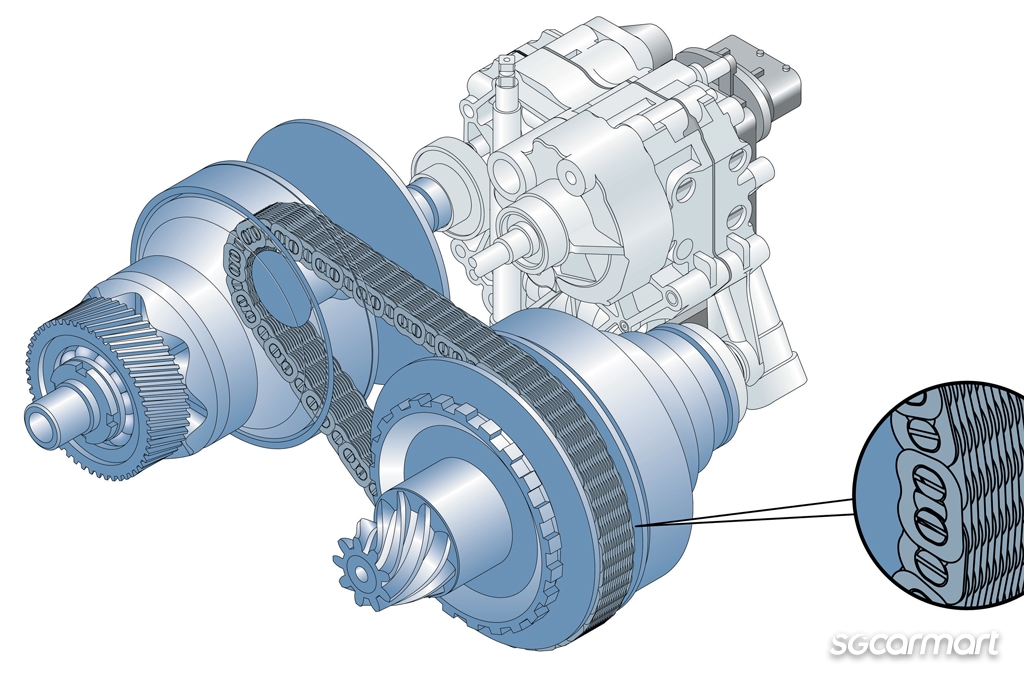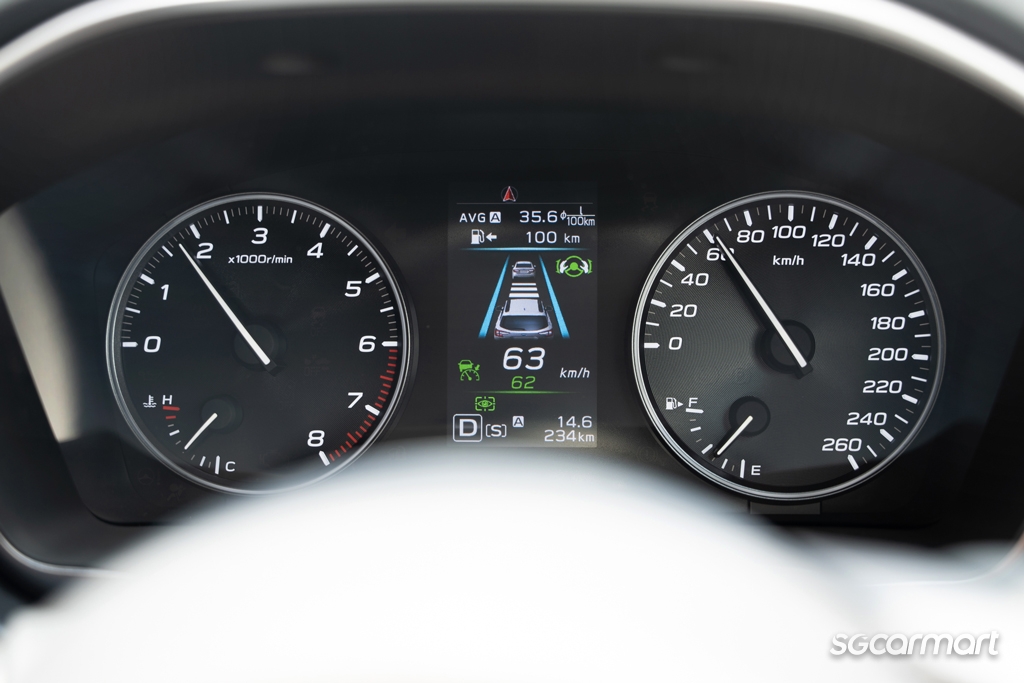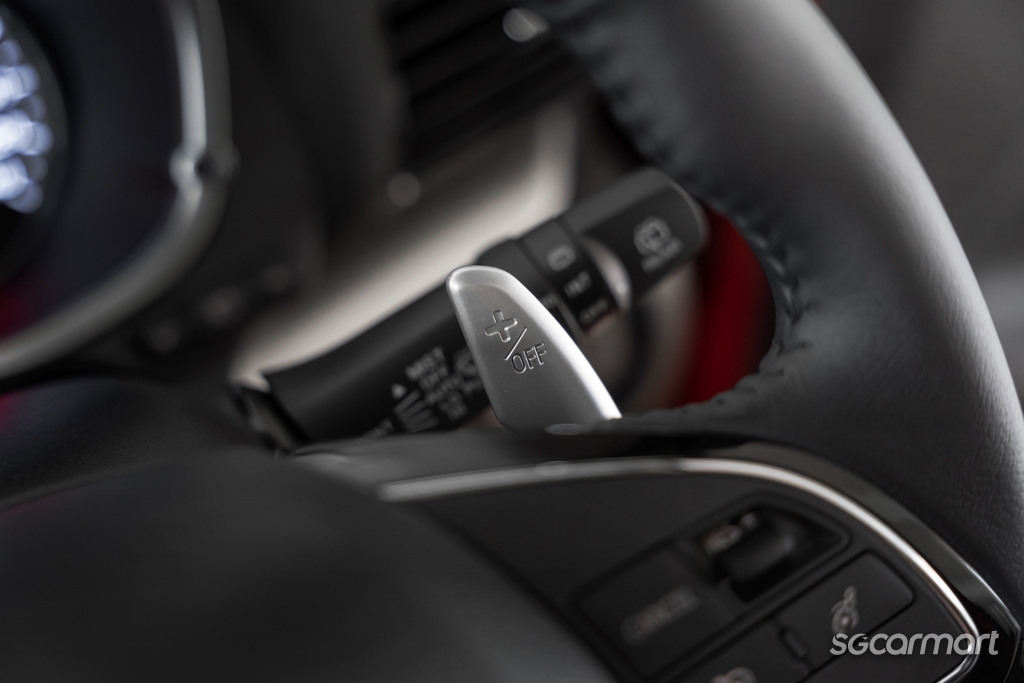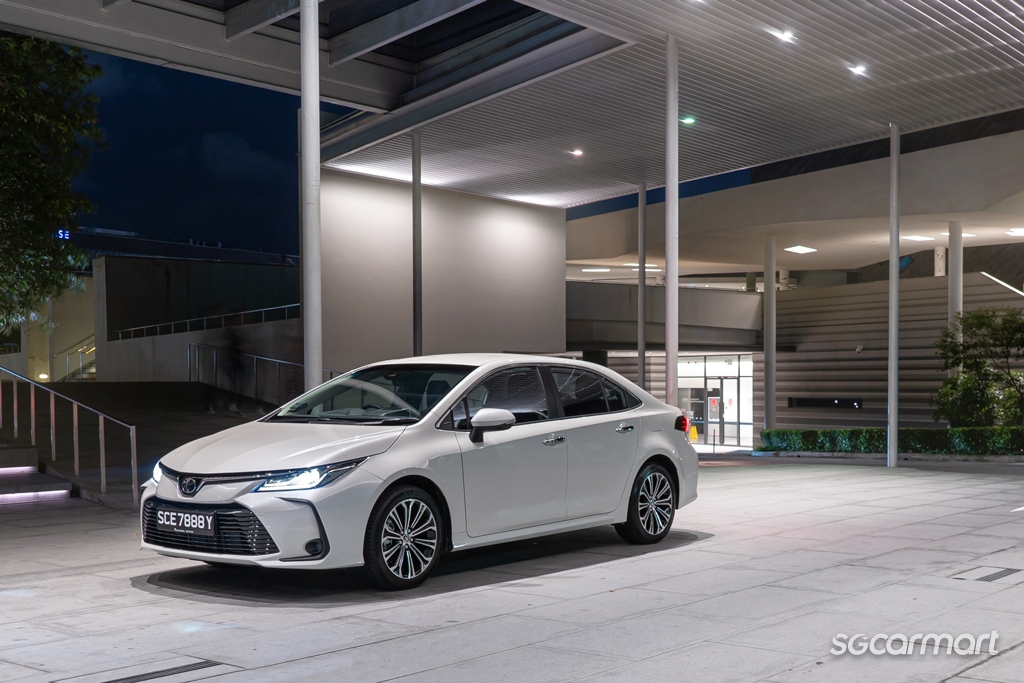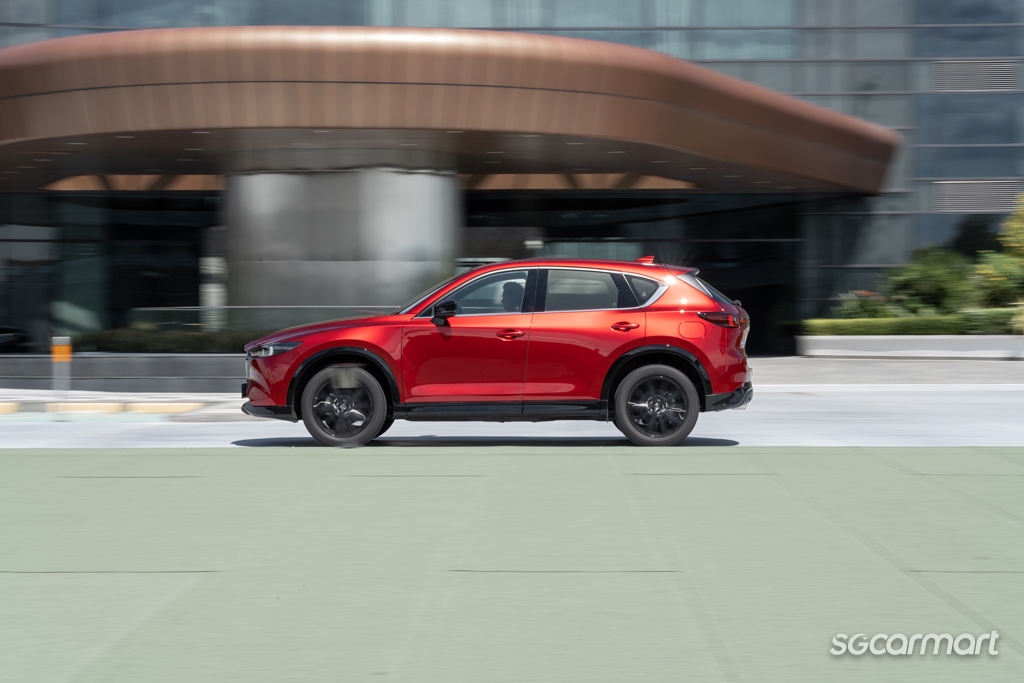Relax, that CVT drone is perfectly 'normal'
08 Nov 2023|7,347 views
So, you've just acquired a car and are excited to take it out for a spin. You find a clear stretch of road and with much gusto, mash the accelerator pedal to try out its dynamic abilities.
But instead of hearing the revs rise before momentarily dropping as the gearbox shifts from a lower gear to a higher one, you get a droning noise that rises and falls.
It's accompanied by this rubber band-like sensation. It's like the engine could have revved higher before shifting, but the rpms drop before rising again. What's going on?
How CVTs work
To understand why this happens, we need to explain how a continuously variable transmission (CVT) works. Simply put, unlike conventional automatic gearboxes that have gears and fixed gear ratios, a CVT is made up of two opposing cone-shaped pulleys that have a belt between them, though some use a chain.
One cone is attached to the engine while the other is connected to the drive shaft. In response to the driver's inputs, the cones will either move nearer or further from each other, causing the belt to move up or down the cones' sides. The 'gear ratios' are infinite and continuously vary, hence the name.
CVTs help ensure that the engine runs as efficiently as possible by utilising the most efficient 'gear ratios' in any driving situation.
CVTs help minimise fuel consumption by helping ensure the engine operates at the most ideal (lower) engine speeds
So, where does the droning noise come from?
Hard acceleration causes engine speeds (rpms) to rise until it hits the redline or rev limiter. However, for a CVT-equipped car, what happens is that the engine revs rise, but are consistently held at a particular point deemed by the transmission to be the most ideal/efficient.
This is when you hear the droning noise, which is typically accompanied by an elastic or 'rubber band' feel. Since there are no predetermined shift points unlike in a regular automatic or even manual gearbox, it feels and sounds as if no progress is being made, even as the car picks up speed.
The only way to minimise or eliminate this is to avoid hard acceleration, or if your car has it, utilise the manual override function. Cars with this feature offer predetermined shift points that a driver can select using either the paddle shifters or gearshift lever.
Most Toyota models like the Corolla Altis (left) are equipped with CVTs, but most Mazdas like the CX-5 (right) have six-speed automatics
Why are CVTs popular?
Assuming all other conditions are the same, a CVT-equipped car will be more efficient than a car with a manual gearbox, dual-clutch transmission or torque converter automatic. A CVT can find the most ideal 'gear ratios' for most driving situations compared to a transmission with fixed ratios.
Given the ever-tightening environmental regulations that seek to limit the emission of CO2 and other pollutants, the use of CVTs is just one of the solutions that carmakers have had to put in their models.
Most Japanese makes and models have CVTs. These include the Toyota Corolla Altis, Honda Civic and Nissan Qashqai. Nearly all Subaru models are equipped with a CVT as well. Mazda is the notable exception - most of its cars have a six-speed automatic gearbox.
So, if your car emits a constant drone and it feels like nothing is happening even when you accelerate hard, remember that it's just the nature of CVTs.
Looking for more advice? These articles may interest you
First-time hybrid owner? Relax, your fuel gauge is okay
Relax, it's just the Stop-Start system
Engine oil changes: Separating fact from fiction
So, you've just acquired a car and are excited to take it out for a spin. You find a clear stretch of road and with much gusto, mash the accelerator pedal to try out its dynamic abilities.
But instead of hearing the revs rise before momentarily dropping as the gearbox shifts from a lower gear to a higher one, you get a droning noise that rises and falls.
It's accompanied by this rubber band-like sensation. It's like the engine could have revved higher before shifting, but the rpms drop before rising again. What's going on?
How CVTs work
To understand why this happens, we need to explain how a continuously variable transmission (CVT) works. Simply put, unlike conventional automatic gearboxes that have gears and fixed gear ratios, a CVT is made up of two opposing cone-shaped pulleys that have a belt between them, though some use a chain.
One cone is attached to the engine while the other is connected to the drive shaft. In response to the driver's inputs, the cones will either move nearer or further from each other, causing the belt to move up or down the cones' sides. The 'gear ratios' are infinite and continuously vary, hence the name.
CVTs help ensure that the engine runs as efficiently as possible by utilising the most efficient 'gear ratios' in any driving situation.
CVTs help minimise fuel consumption by helping ensure the engine operates at the most ideal (lower) engine speeds
So, where does the droning noise come from?
Hard acceleration causes engine speeds (rpms) to rise until it hits the redline or rev limiter. However, for a CVT-equipped car, what happens is that the engine revs rise, but are consistently held at a particular point deemed by the transmission to be the most ideal/efficient.
This is when you hear the droning noise, which is typically accompanied by an elastic or 'rubber band' feel. Since there are no predetermined shift points unlike in a regular automatic or even manual gearbox, it feels and sounds as if no progress is being made, even as the car picks up speed.
The only way to minimise or eliminate this is to avoid hard acceleration, or if your car has it, utilise the manual override function. Cars with this feature offer predetermined shift points that a driver can select using either the paddle shifters or gearshift lever.
Most Toyota models like the Corolla Altis (left) are equipped with CVTs, but most Mazdas like the CX-5 (right) have six-speed automatics
Why are CVTs popular?
Assuming all other conditions are the same, a CVT-equipped car will be more efficient than a car with a manual gearbox, dual-clutch transmission or torque converter automatic. A CVT can find the most ideal 'gear ratios' for most driving situations compared to a transmission with fixed ratios.
Given the ever-tightening environmental regulations that seek to limit the emission of CO2 and other pollutants, the use of CVTs is just one of the solutions that carmakers have had to put in their models.
Most Japanese makes and models have CVTs. These include the Toyota Corolla Altis, Honda Civic and Nissan Qashqai. Nearly all Subaru models are equipped with a CVT as well. Mazda is the notable exception - most of its cars have a six-speed automatic gearbox.
So, if your car emits a constant drone and it feels like nothing is happening even when you accelerate hard, remember that it's just the nature of CVTs.
Looking for more advice? These articles may interest you
First-time hybrid owner? Relax, your fuel gauge is okay
Relax, it's just the Stop-Start system
Engine oil changes: Separating fact from fiction






